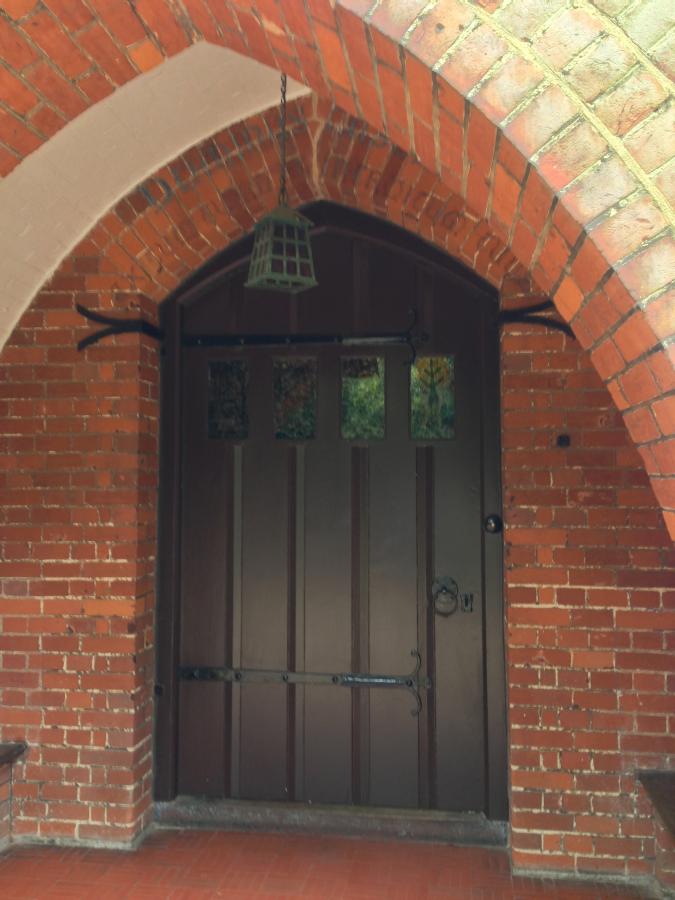Kent, UK
Philip Webb designed the Red House built by William Kent of Bermondsey in 1859 for William Morris. The front door has an oak-cased iron rimlock with the back edge chamfered down to a tail planted on a stile which forms part of the decorated planked door.
Not long after the photo was taken of the seminal Arts & Crafts front door a very similar lock oak-cased lock was advertised for sale on SalvoWEB by Ben Couchman of UK Architectural Heritage in Wormelow. Mr. Couchman bought the lock from Keir Lewis, an English antiques and architectural salvage who now lives in France.
Keir wrote that the lock came from the central southwest region of France. These type of locks are reputed to be both 18th and 19th century, typically with wrought iron keys which usually turn twice. The keys are generally very simple, i.e not multi-lever mechanisms. They are found almost always on plank doors. the earlier ones nailed on with hand made nails, bent over on the other side, and later ones held on with nuts & bolts.
Quite often there is a keyhole on one side only, most usually that being the flat side that fits to the door. These were used in places where one would lock the door only from the outside, because the space being secured was not living acommodation, such as a barn, shed, or cellar. Usually in oak, sometimes in walnut or poplar, fairly plain functional items, although they do crop up decorated (carved). The bolt went into the wall or doorframe and tends to throw quite a long way, two inches at times, wrote Keir.
The original contract for Red House required the three main doors to have simple wrought iron ring handles and plates with 10 inch oak locks with latches combined, the ring handles to have the latches which are to shoot into wrought iron boxes fixed to posts. Each of these doors to have 2 strong wrought iron bolts. There are clauses which suggest that some ironwork would be supplied by a 'third party'.
The ironmonger supply in the contract was Francis Gerish of East Road, City Road in London. Curiously, according to Grace's guide, Francis Gerish married widower Elizabeth Webb (nee Beady) - could she have been of the Beale family from another Philip Webb house Standen?
Philip Webb spent three months (his first trip abroad) holidaying in France in 1858 with William Morris where the two discussed Red House, which is now described as being built in the 'parsonage style' similar to Alvechurch Rectory by William Butterfield. At Clouds, an Arts & Crafts mansion designed by Webb, he installed antique Venetian fireplaces. He also acquired other items for clients such as antique tiles but had to stop as he got older because he had accumulated to many items which clients did not eventually reuse.
Red House was 'studio house' for family living and artists to stay and work. It had no bathrooms, but did have three WCs. William Morris sold the house and moved back to London in 1865.
Story Type: Feature



